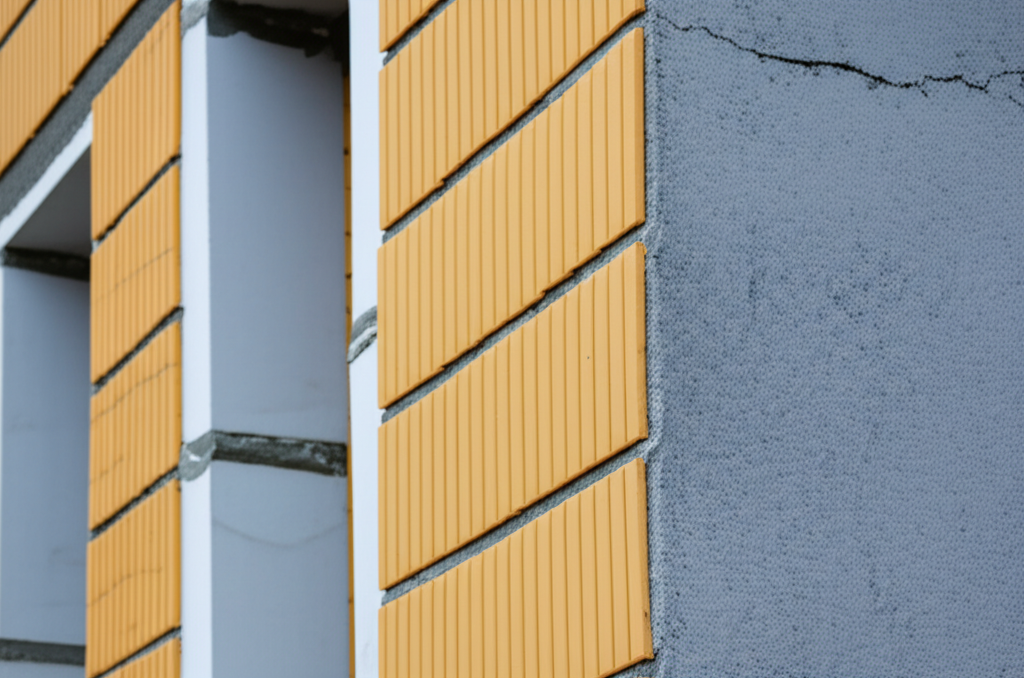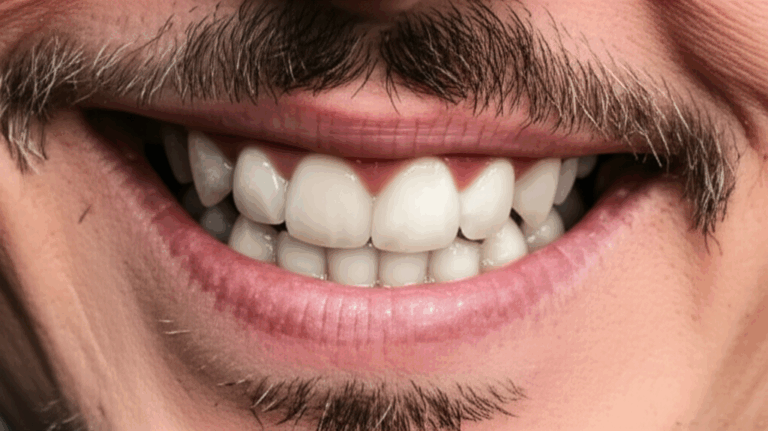
What Are Veneers in Construction? A Friendly Guide to Understanding, Choosing, and Using Veneers
Have you ever looked at a nice brick building or a house covered in pretty stone and wondered, “How does that work?” Maybe you’ve heard someone talk about “stone veneer” or “brick veneer” and felt a bit confused. You’re not alone—these words come up a lot when people talk about outside and inside parts of buildings. If you’re interested in what veneers really are in building, you’re in the right place.
Maybe you’re planning a home project, thinking about fixing up a room, or just curious about how those fancy walls are made. All the construction words can be a little much sometimes! So let’s break it all down, one step at a time, using simple language and real examples. By the end, you’ll get both the “what” and the “why” of veneers, and you’ll feel better about picking the right one for your house, your project, or even just the next quiz on building basics.
In This Article
Here’s what we’ll talk about:
- Introduction: Why Understanding Veneers Matters
- What Exactly Is a Veneer in Construction?
- The Most Common Types of Veneers (with Real-Life Examples)
- Why Choose Veneers? Key Benefits Explained
- The Flip Side: Disadvantages and Considerations
- How Do Veneer Wall Systems Actually Work?
- Where Are Veneers Used? Real-World Applications
- The Takeaway: Veneers’ Lasting Role and How to Make the Best Choice
Introduction: Why Understanding Veneers Matters
Let’s start with a simple question: Why are so many buildings covered with thin layers of things—like brick, stone, or wood—instead of using walls made out of only brick or stone?
It’s not just about looks, even if veneers make things look great. Veneers in building work are more than just a “skin” for looks. They’re a smart and cheap way to give buildings the style, cover, and warmth of different stuff, without needing to build everything out of heavy and pricey solid pieces.
Why does this matter for you? Whether you’re a homeowner, a do-it-yourselfer, or just someone who wants to know more about the buildings you see each day, knowing what veneers are—and what they can and can’t do—helps you make better choices. Maybe you’re picking siding, seeing what’s possible for remodeling, or just wondering how buildings are put together. Knowing about veneers puts you ahead.
Think of this guide as your “inside scoop” on a building trick that’s been quietly shaping everything from homes to tall buildings for a long time.
What Exactly Is a Veneer in Construction?
Let’s clear up the confusion now. When we talk about veneers in building, we’re not talking about something weak or “fake.” We’re talking about a way of building that uses a thin, protective piece of material—like brick, stone, wood, or concrete—stuck on the outside of a building.
The Simple Science: Veneer Defined
A veneer is a thin, good-looking, and not-structural layer that covers the outside (or sometimes inside) of a wall or other surface. In regular words, it’s like a jacket for your house—giving it style, protection from weather, and sometimes extra warmth, but it’s not holding up the building.
- Veneers are “not load-bearing.”
- That means the veneer isn’t holding up the building above it. The real strength comes from the frame, blocks, or steel behind the veneer.
- Veneers are thin and usually light.
- Picture a stone wall that’s only a few inches thick instead of a foot thick—much less material, much lighter, and a lot easier to put in!
Analogy Time
Think about your phone case. Your phone works fine without it, but the case adds protection and changes how the phone looks. That’s kind of what a veneer does for your house or building.
How Is a Veneer Different From Solid Material Construction?
People often mix up veneer walls and solid walls. Let’s use brick as an example:
- Solid Brick Wall: All the bricks are piled and glued together, and they hold up what’s above.
- Brick Veneer Wall: Just a single line (“wythe”) of bricks is attached to the outside of a framed wall or block wall. The bricks don’t hold up the roof or floors—they’re just there for looks and cover.
What’s different matters. Veneer walls use a lot less material, weigh a lot less, and can be built faster than old-fashioned solid walls.
Quick Recap
- Veneer: Thin, good looking, and not holding up the house
- Solid: Thick, heavy, and supporting the building
The Most Common Types of Veneers (with Real-Life Examples)
Not all veneers are the same. Depending on the look you want and how much you want to spend, you’ve got lots of choices. Here are the main types you’ll find, along with examples and what makes each one special.
Stone Veneer
Natural Stone Veneer:
Imagine cutting slices of pretty pieces of real stone like granite, limestone, or slate into thin, flat pieces. That’s real stone veneer—real stone, just not as thick or heavy as normal stone walls.
- Where you’ll see it: Expensive homes, fireplaces, big front entries, and restaurants.
- Pros: Lasts a long time, stands up to weather, always looks good
- Cons: Heavier and costs more than fake ones
Manufactured (Faux) Stone Veneer:
Think of this as “stone that looks like the real thing.” Made from cement or made-up materials, shaped and colored to look like stone.
- Where you’ll see it: Outside of homes, columns, special walls, garden walls
- Pros: Lighter, cheaper, and lots of styles
- Cons: Doesn’t look quite as real, may not last as long as true stone
Brick Veneer
Thin Brick Veneer:
Take a brick, cut it so it’s thinner, and you get thin brick veneer—often just half an inch to an inch thick.
- Where you’ll see it: Home siding, special inside walls, around fireplaces
- Pros: Lighter and easier to put up than real brick, still looks classic
- Cons: Not as tough as a full brick wall
Traditional Brick Veneer:
The usual single row of brick veneer you might have seen on houses or office buildings.
- Where you’ll see it: House outsides, business building walls
- Pros: Tough, very little upkeep, always in style
- Cons: Needs a good installer and good drainage
Wood Veneer
Architectural Wood Veneer:
Very thin slices of pretty wood glued to cheaper boards. It’s a way to get the look of walnut, cherry, or oak for much less money.
- Where you’ll see it: Inside wall panels, cabinets, office front areas
- Pros: Warm, natural look; can be used in lots of ways; better for the planet than whole wood
- Cons: Can get ruined by water or getting hit
Engineered Wood Veneer:
Think of plywood or board with a wood look—an earth-friendly choice for big siding jobs.
Stucco Veneer
Traditional Stucco:
A standard mix of cement, sand, and water spread onto walls. It dries to a hard but not thick finish.
- Where you’ll see it: Southwest homes, apartments, business buildings
- Pros: Smooth or rough, lasts in dry weather
- Cons: Might crack if walls move or if it gets wet all the time
EIFS (Exterior Insulation and Finish Systems):
Newer stucco-style stuff with built-in insulation and a thin, fake finish on top.
- Where you’ll see it: Many new business buildings, apartments
- Pros: Saves energy, looks flexible
- Cons: Must be put on right to keep water out
Concrete Veneer
Precast Concrete Panels:
Big factory-made slabs of concrete, sometimes colored or with designs, put up on the building.
- Where you’ll see it: Tall buildings, stadiums, some old toughness-looking buildings
- Pros: Strong, you can choose styles, put up fast
- Cons: Heavy, needs strong design
GFRC (Glass Fiber Reinforced Concrete):
Looks like full-thickness concrete, but way lighter.
- Where you’ll see it: Odd-shaped walls, modern office buildings
- Pros: Thin, lighter than you’d think, can do lots of shapes
- Cons: Needs pros to put it in
Other Standout Veneer Options
- Fiber cement panels: Tough siding, not as heavy as real concrete—a modern favorite
- Porcelain tile veneer: For smooth, fancy tile outside walls and cool inside walls
- Metal veneer panels: Thin metal panels used outside business or factory buildings
Why Choose Veneers? Key Benefits Explained
You might ask, “If veneers don’t hold up the building, why not just use solid things for everything?” Here’s why veneers are super popular for new buildings and fixing up old ones:
1. Good Looks & Lots of Style Choices
Veneers give you tons of ways to design. Want your house to look like old stone? Easy. Want a modern, metal, or glass look? Veneers make that possible without doing a whole lot of changes.
- Colors, textures, and styles: Just about anything you can think of, you can do with veneer.
- Mix materials: Put brick, wood, stone, or concrete veneer together for your own style.
2. Saves Money
Solid brick or stone walls cost a lot—in materials, work time, and for holding all that weight. Use a veneer, and you might pay only a bit of the price.
- Work goes faster: Veneers can go up really fast.
- Material costs less: Especially fake stone and thin brick.
3. Lighter Weight
Your house might not be made to hold up full bricks or rocks—but almost any building can wear a “veneer jacket.” Veneers are way lighter, so you don’t need heavy foundations or supports. This can save a bunch of money, mainly for new homes.
4. Easy to Put Up
Time is money—especially in building work. Veneers can go up quickly, and often you don’t have to tear down old walls first.
- Less mess: For remodels, often no need to remove old siding or walls.
- Can install anytime: A lot of veneer types don’t need perfect weather.
5. Stops Water Problems
The best veneer walls have air gaps and draining systems. When rain hits, water might get behind any siding—but with drain holes, metal flashing, and an air gap, that water drains out instead of making things rot.
6. Energy and Comfort
Some veneer setups—like EIFS or panels with insulation—add a layer that can keep your place warmer in the winter and cooler in the summer. Good for your comfort and smaller power bills.
Real-Life Savings & How They Work
- Facts show building with veneers can cut 5–15% off full wall system costs compared to solid brick/stone, and go up 20–40% faster. That’s a lot less time with workers at your house.
- A full brick wall can weigh up to 100 lbs per square foot. Brick veneer? Usually more like 30–50 lbs. Fake stone veneer? As little as 6–15 lbs per square foot!
The Flip Side: Disadvantages and Considerations
No building material is perfect. Veneers are great, but you still need to plan and install them right. Here’s what to look out for:
1. Water Leaks
If you’ve ever seen paint peeling or bricks falling apart on a wet wall, it’s usually because water got stuck behind the wall. Veneers MUST have the right metal flashing, water holes, and air gaps. If not, trapped water causes mold, wood rot, or even bigger problems.
2. Not Always Tough
- Quality matters: Cheap or badly made veneers can crack, fade, or fall off.
- Maintenance: Some veneers, like wood, need care (like sealing.
3. Need a Pro to Install
Doing things wrong is asking for trouble. The right layers and how you fit everything together is key for making veneers last. Hire experts—or at least learn a lot before trying it yourself.
4. Not for Holding Weight
Veneers aren’t strong enough to hold up heavy stuff like decks or roofs. You still need a real wall behind it.
5. Not Always Easy to Fix
After damage, matching an old section of stone or brick veneer can be hard. Real stone varies, and fake stone can go out of stock. Keep a few extras if you can.
How Do Veneer Wall Systems Actually Work?
Let’s take a look “behind the scenes” to see how veneer walls keep water out, stay put, and last.
Basic Parts of a Veneer Wall
Why So Many Layers?
Think of your wall like a multi-layer cake:
- The cake (main wall) holds everything up.
- The filling (air gap) keeps things dry.
- The icing (veneer) adds protection, style, and strength.
Keeping Water Out is SUPER Important
Any wall can get wet from rain. The tricky part is making sure water can get OUT instead of being stuck inside. That’s why you need air gaps and drain holes.
Where Are Veneers Used? Real-World Applications
Veneers are everywhere—but you might not spot them unless you know what to look for!
Houses
- Home outsides: Many modern homes use brick or stone veneer for a classic look.
- Entryways, columns, special walls: For better curb appeal.
- Fireplaces: Stone or brick veneer adds a wow factor inside, without rebuilding the whole wall.
Businesses and Public Buildings
- Offices, schools, hospitals: Light concrete, metal, and stone panels dress up bigger walls.
- Lobbies and front desks: Make a good first impression with wood, tile, or stone—veneers work here too.
Fixing Up Old Places
One of the biggest pros of veneers? You can update an old brick wall or boring siding without breaking everything down. Veneers are used in historic fix-ups, keeping the structure but making it look new outside.
Inside Design
Open any “home style” magazine and you’ll see veneers inside:
- Accent walls: Brick or wood veneer adds life to bedrooms or dining rooms.
- Stores and offices: Tile, panels, or fake stone as backgrounds.
Who Should Consider Veneers? (And Who Might Not)
Should you use veneers? Here’s how to decide.
Veneers are a good choice if you:
- Want to make your home’s outside look better, but your walls can’t hold full brick or stone
- Need a cheap way to get that classic or modern look
- Are updating an old house that can’t hold much extra weight
- Want to mix styles for something unique
- Are hoping to boost curb appeal without a big delay
Veneers may NOT be right if:
- You need a wall that can take a lot of hits or lasts forever no matter what
- You want the wall to support heavy add-ons like a deck
- You live somewhere super wet and can’t make sure it’s put in by the book
- You need to match a weird, old material (new replacement stuff might not match)
A little honesty helps. Veneers are great, but nothing’s better than using the right thing for the job.
The Takeaway: Veneers’ Lasting Role and How to Make the Best Choice
Let’s end with what really matters:
Veneers in building aren’t just for looks. They’re a smart, proven way to get awesome style, add some cover, and even save on power bills—often for less money and without changing your house much.
Here’s what to remember:
- Veneer = thin outside layer, not for holding things up
- Materials: Brick, stone, wood, cement, tile, metal—you’ve got a lot of options
- Why use veneers? Lots of design options, lower price, lighter, faster to put in
- Watch for: Water problems, making sure you install right, and fix-up challenges
- Where can you use them? Homes, offices, fix-ups, inside or out—almost anywhere
Your best move? Do your research, work with people who know what they’re doing, and always make sure your veneer wall includes all the stuff it needs for water and to hold things together. When in doubt, ask a pro.
Your Veneer Wall Questions, Answered (FAQ)
Q: Are veneers just for looks?
Nope! While style matters, new veneer setups also protect from rain, can help a little with insulation, and might make your house worth more.
Q: Can veneers be put on both inside and outside walls?
Totally. You’ll see them on outsides (like siding, walls) and insides (fireplaces, cool feature walls, fancy lobbies).
Q: How long do veneer walls last?
If they’re put in right and taken care of, brick or stone veneer can last 50–100 years or more—often as long as real old-time walls.
Q: Do veneer walls need any work after?
A bit. Most need a wash sometimes, and wood veneers need sealing. The main thing is watching for water problems.
Q: Who should install my veneer?
Small jobs (like inside fake brick) can be DIY, but for outside and big jobs, get a pro. You’ll spend less on repairs later!
Ready to Take the Next Step?
If you’re planning a building or remodel and need good advice on picking the right veneer, don’t wait to ask someone who knows, or if you need digital solutions for dental veneers, a digital dental lab can help with custom choices for dental veneers—using the same ideas of looks and the right materials. If you’re working on dental restorations, a veneer lab can help you get nice, lasting results that fit and work just right.
Learning about veneers is more than bricks and cement—it’s about making your space look great, work well, and last.
What should you do next?
- Think about the looks and use you want
- Know how much your building can hold
- Always use licensed, skilled pros
- Never skip on making sure water can get out and everything is put together right
When in doubt, go back to our “phone case” idea: Veneers give style and protection for the places you care about. Use what you’ve learned, and your buildings will thank you for years.
Sources:
- Whole Building Design Guide (WBDG)
- National Association of Home Builders (NAHB)
- Building Science Corporation
- American Institute of Architects
Reviewed by a licensed construction professional, 2024.
For more info about how veneers work in other fields—like teeth—see our guides on veneer and the role of a china dental lab for confident, long-lasting smiles.
(This article is for teaching only and isn’t professional building advice. Always ask an expert for your own project.)








